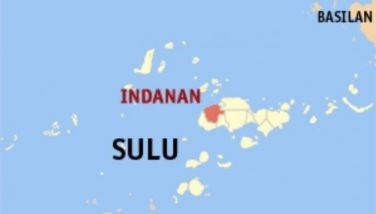Dredging, sand extraction threaten Cagayan fish
BAYOMBONG, Nueva Vizcaya, Philippines – Extraction of sand in the waters of Cagayan continues to threaten one of the country’s most expensive fish, whose dwindling population is already beset by unregulated fishing.
According to the Bureau of Fisheries and Aquatic Resources (BFAR), dredging or sand extraction in Cagayan’s northern coastlines may have negative impact on efforts to save the ludong, which only thrives in the Cagayan River.
Dr. Jovita Ayson, BFAR director for Cagayan Valley, said the ludong, also called the President’s fish because of its extremely high price, is one of the country’s most threatened edible fish.
Citing a 2008 study, BFAR said these dredging activities would destroy the ludong’s habitat, spawning areas and food producing zones in the Cagayan River from Isabela and its tributaries to the open seas in Cagayan’s coastal Aparri town.
These dredging activities “may likely obstruct the migration path of this fish,” the BFAR said.
Reports said the extraction of black sand in Cagayan’s coastlines continues despite the suspension of such activities by the Department of Environment and Natural Resources and the provincial government.
Recently, Bayombong Bishop Ramon Villena denounced the extraction of black sand amid apprehension that this poses great danger to the environment and is hazardous to the health of residents.
“(The dredging activity) was supposed to be a flood control project but in reality, it was mining for magnetite which is ultimately destructive,” he said.
The ludong population is also being threatened by “heavy exploitation as a result of its encouraging market price.”
Also known as the Pacific salmon, the seasonal ludong, described as one of the country’s most delectable fish, is priced at as much as P5,000 per kilo, making it one of Philippines’ most expensive fish.
Earlier, Cagayan Rep. Juan Ponce Enrile Jr. called for the banning of the catching of ludong during its spawning and breeding periods in the last quarter of the year.
Enrile’s first congressional district covering Cagayan’s northeastern corner, including Aparri town, is where most of the spawning of ludong takes place.
“We are resolute in safeguarding (our) natural wealth. Ludong is found only in Cagayan and should be acknowledged for its intrinsic value and as part of the world’s biodiversity,” Enrile said.
Ludong, a rare species of mullet (Cestraeus picatilis), is a riverine and seasonal fish that is catadromous in nature, meaning it is a freshwater fish that migrates from the upper Cagayan River in Isabela to Aparri, Cagayan to breed, a journey of some 300 kilometers.
It is during this journey or breeding season from October to November that they are caught by fishermen even before they could grow bigger or spawn.
- Latest
- Trending































